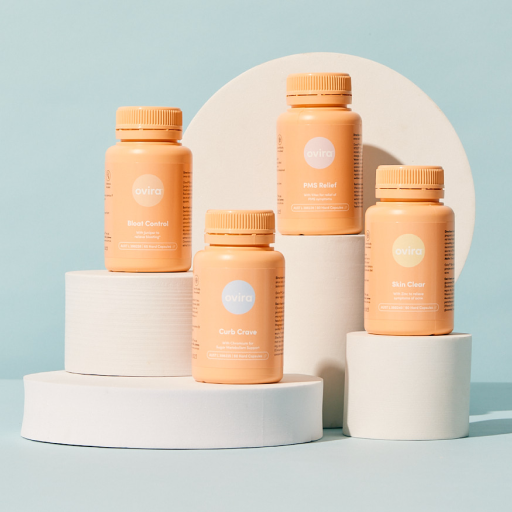6 Tips From Alice On How To Relieve Period Pain

1. Say goodbye to caffeine
Trying to cut down on caffeine is one of those things that we seem to revisit every couple of months. By the end of those caffeine free weeks however, we find ourselves more reliant on coffee than ever before. It wasn’t until I learnt about vasoconstriction, that I realised how much of an effect caffeine actually has on your menstrual cycle.
Caffeine is a powerful vasoconstrictor which narrows the blood vessels in your body, thereby decreasing the rate in which blood flows to the uterus. This increases vascular resistance which also means the body must work harder to push blood through the circulatory system to create blood flow. What does that mean for your period? More pressure on the uterus and more painful cramps.
2. Try a vegan diet (even if it’s only once a week)
Throughout the journey towards my endometriosis diagnosis, I was told to cut out dairy and fatty red meats from my diet. Up until that point, I had always been sceptical of the benefits in adjusting what you put into your body to assist with hormonal balance, but I had reached the point where nothing else was effective and gave it a shot. The results weren’t immediate and I was disappointed. It wasn’t until I was presented with a huge cut of meat after trying out a vegan diet for a couple of weeks however, that I realised just how much of an effect my diet had on my body.
Fatty red meats contain high levels of saturated fats and prostaglandins which contribute to inflammation, constricting the blood vessels in the uterus which results in more pressure and painful cramps. Not only that, foods that are high in saturated fats can also increase cholesterol levels which can lead to a string of other health conditions. I’ve been on a vegan diet now for three years and it’s been great. It’s definitely a big lifestyle change however, so even if it’s just once a week where you decide to cut down on your meat and dairy consumption, I’d really recommend it.
3. Raspberry Leaf Tea
We always have a box of raspberry leaf tea in the office and we find ourselves constantly having to restock which is a testament to how effective it is for your menstrual cycle. Raspberry leaf tea is a herbal tea, free of caffeine and full of what the name suggests - the leaves of a raspberry plant. This herb has a unique combination of ingredients including fragarine, tannins, calcium and magnesium.
Fragarine is known to strengthen the muscles in the pelvic region such as the uterus, which not only relieves muscle spasms and cramps, but also aids those who are pregnant and promotes an easier delivery. The tannins help to reduce blood pressure and fight inflammation, allowing your uterine muscles to relax. And finally, the minerals in calcium and magnesium play a huge part in neuromuscular transmission and muscle contraction which means less muscle spasms in the uterus.
4. Lots and lots of green juice
It’s no secret amongst the team that I love a big glass of green juice every morning. Spinach, kiwi, kale, the list goes on. One thing I struggle with quite badly during my period is fatigue and low energy so an iron pick me up is a great way to combat that. I love knowing that I’m starting off my day with enough iron to get me through my most productive hours. Since I’m a morning person, I need all the right nutrients early in the day so that my body can keep up with my brain at 6am when anything and everything in the world seems possible. The magnesium in all these greens again, are a great way to ensure those muscle contractions are at bay and the uterus is happy.
5. Exercise
Exercising is probably the last thing that you want to be doing whilst on your period and that’s ok. Studies have shown that even if you don’t exercise whilst on your period, exercising regularly in the days leading up to and during your cycle, can reduce overall pain levels. You’ve probably heard this a million times before but exercising really does enhance your mood and increase your blood circulation. So naturally, doing this regularly promotes better circulation around the whole body including the uterus which means less intense cramping, especially when my endo pain starts to kick in. I’d also recommend finding a way to make exercise something to look forward to. We’ve recently set ourselves a team challenge to complete 100km over the month of October and it’s been such a good way to get the team moving and actually excited about exercising every single day.
6. Ovira’s Noha Device
Electrotherapy has been around since the 1980s, and has been used to treat conditions such as chronic joint and muscle pain for decades. When I realised that not once had it been mentioned to people who menstruate as a scientifically proven way to relieve period pain instantly and naturally, I was frustrated. So I decided to take things into my own hands, created Ovira and developed our Noha device. Our Noha device is a small and wearable TENS (Transcutaneous Electrical Nerve Stimulation) machine that sends electrical pulses through two electrode pads to overload your nervous system, reducing its ability to transmit those pesky pain signals being sent to your brain. No signals equals no pain equals a happy uterus.
Moreover, Noha is FDA approved, TGA registered and CE marked unlike other TENS units in the market and we offer a 100 day risk free trial too. I use my Noha device every period and our whole team does too. So, if you or a fellow uterus bearing loved one suffers from period pain, please give Noha a go. It would go a long way in my mission to end the unnecessary suffering of women everywhere.





